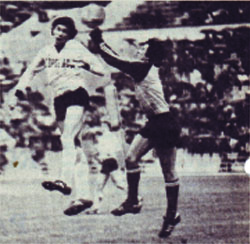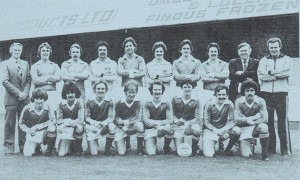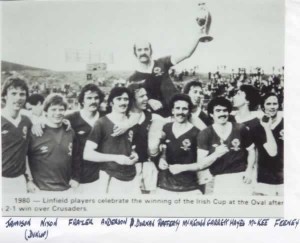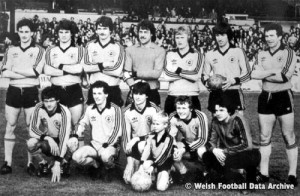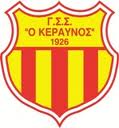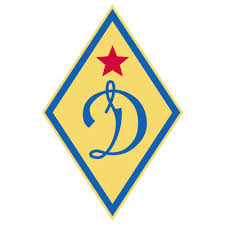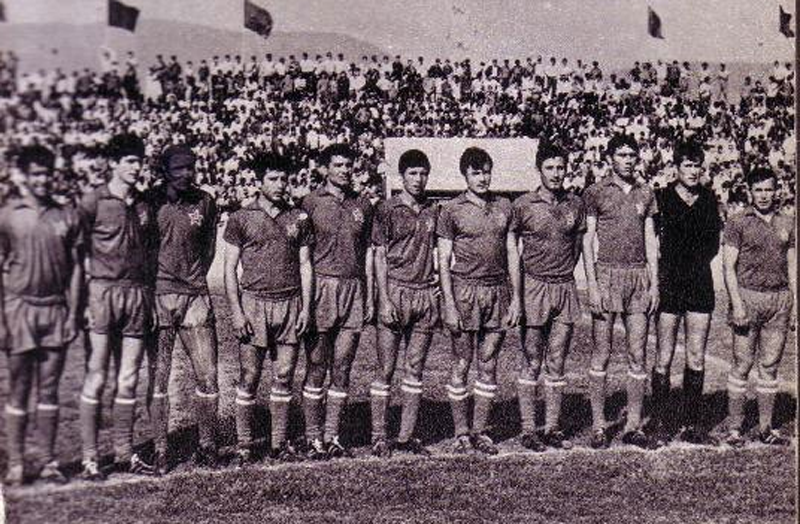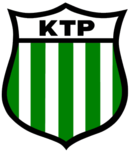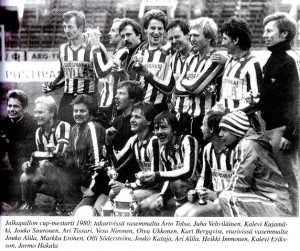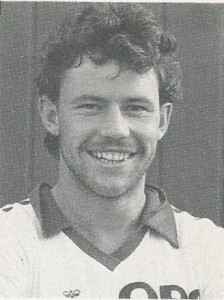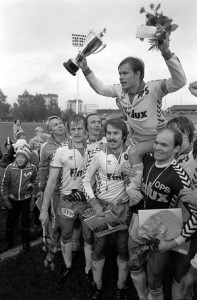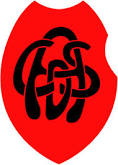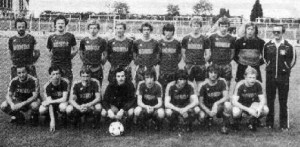Republic of Ireland. Two changes before the start of the 1979-80 season: Cork Alberts changed its name to Cork United. Cork Celtic went into bankruptcy. There was no second division in the country, therefore, no promotions and relegations. Ocasional league changes were done by elections – University College Dublin was elected to replace Cork Celtic. The new league member, along with Cork United, were outsiders this season – they finished 14th and 15th . Cork United, 14th, was 9 points behind Home Farm. Last finished Shelbourne with 12 points. Like the league outsiders, the leaders were also in a category of their own. Athlone Town finished 3rd with 39 points – a point ahead of Shamrock Rovers. Behind Shamrock Rovers was Finn Harps, also with 38 points, but worse goal-difference. These three were comfortably ahead of the bulk of the league – Bohemians was 6th with 32 points. Yet, the real leaders were further ahead – Athlone Town ended 7 points behind the silver medalists. Dundalk and Limerick United fought for the title to the end, leaving the other teams in the dust. Dundalk finished with 46 points and lost the title by a point. One tie instead of a loss and much higher scoring made Limerick champions – 47 points they had, thanks to more aggresive play than Dundalk’s.
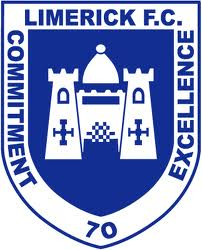 Limerick, relatively young for an Irish club – founded in 1937, had little success in its history. So far, they had been champions once – in 1959-60. The club was no longer called Limerick FC, but changed name to Limerick United – not the last change of name.
Limerick, relatively young for an Irish club – founded in 1937, had little success in its history. So far, they had been champions once – in 1959-60. The club was no longer called Limerick FC, but changed name to Limerick United – not the last change of name.
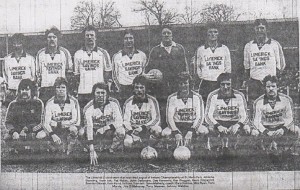 The new champions were typical Irish squad – there were no famous players, for big talent inevitably played in England. But it was historic squad nevertheless – they won not only the second title, but so far the last one for Limerick. The successful team deserves a second look because of that:
The new champions were typical Irish squad – there were no famous players, for big talent inevitably played in England. But it was historic squad nevertheless – they won not only the second title, but so far the last one for Limerick. The successful team deserves a second look because of that:
It was not just rare, but dramatic victory – Limerick United triumphed thanks to a single point in their favour. Well done, lads.
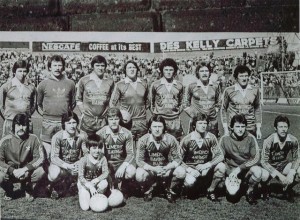 It was the season of the underdog: the Cup final opposed Waterford to St. Patrick’s Athletic. Neither team was much in the championship, so a trophy was more than desirable.
It was the season of the underdog: the Cup final opposed Waterford to St. Patrick’s Athletic. Neither team was much in the championship, so a trophy was more than desirable.
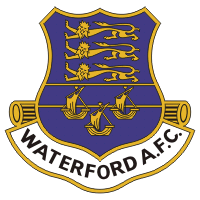 Waterford prevailed 1-0. Cumann Peile Aontaithe Phort Láirge as the club is called in Irish, won the Cup once before – in the long gone 1937. This was their second Cup.
Waterford prevailed 1-0. Cumann Peile Aontaithe Phort Láirge as the club is called in Irish, won the Cup once before – in the long gone 1937. This was their second Cup.
The League Cup is the youngest Irish tournament and the last chance for St. Ptarick’s Athletic to win a trophy this year. Their opponents were Athlone Town, who enjoyed strong season and easily prevailed – 4-2.
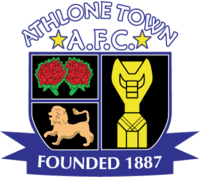 Athlone Town – or Cumann Peile Bhaile Áth Luain – are very old endeed: founded in 1887. But success evaded them so far – to date, they had a single trophy and it was won long time ago – the Irish Cup in 1924. More than half a century later they won their second – the League Cup.
Athlone Town – or Cumann Peile Bhaile Áth Luain – are very old endeed: founded in 1887. But success evaded them so far – to date, they had a single trophy and it was won long time ago – the Irish Cup in 1924. More than half a century later they won their second – the League Cup.
All winners of 1979-80 won their second trophies in their histories. Interesting footnote.
